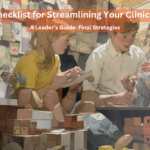Marketing is the strategic driver of commercial success. Having an agile mindset and using cross-functional teams can help turn marketing insights into real success for your company. The adaptability and innovation of an agile cross-functional team will ensure that marketing efforts are being put where it matters, and that your company can adapt quick and stay ahead of competition. Let’s dive into how you can bring this success to your teams.
Aligning Objectives and Expectations
To establish a successful cross-functional agile team, start by aligning the objectives of all stakeholders. Clearly define your goals and ensure that everyone understands how their work contributes to the broader mission. This alignment fosters a shared vision and promotes cohesion within the team.
- Form the team – Form the cross-functional team by defining the roles and responsibility for the work. Create a team charter by defining the goals and KPIs. Set up the cadence of meetings and touch-points.
- Identify the highest priorities – Prepare an online exercise using tools such as Miro or Mural to allow stakeholders the opportunity to place their ideas on a board that they can visually follow. Once all ideas have been collected, give the participants the opportunity to provide feed back and rank each idea. This will provide clarity on the priority of tasks, helping your stakeholders see why different initiatives will be done sooner or later than others.
- Develop action items into a plan – Your action plan should outline who is doing the work. What is the work to be done? By when should the rest of the team expect the work to be done?

Facilitating Open Communication and Collaboration
It’s important to establish an environment where open, honest communication is encouraged and valued.
- Encourage Transparency: Use tools like project boards and team charters to make information readily available to all team members. This transparency helps everyone stay informed and reduces the likelihood of misunderstandings.
- Promote Regular Interaction: Schedule a regular cadence of meetings to discuss progress, address challenges, and plan the next steps. These meetings create a sense of community and keep everyone aligned on the team’s goals.
Embracing Continuous Improvement
The essence of agility is continuous improvement. Encourage your team to constantly seek ways to enhance their processes and deliver better results.
- Implement Feedback Loops: Gather all stakeholders and hold a showcase on a regular cadence. This is an opportunity for your team to provide their accomplishments and seek feedback from stakeholders.
- Conduct Retrospectives: Hold regular retrospectives to reflect on what went well and what can be improved. This practice helps teams learn from their experiences and continuously evolve their processes.
- Encourage Experimentation: Foster a culture where trying new approaches and learning from failure is encouraged. Lead by example and create an environment where failures are learning opportunities that help the entire team progress forward. This will drive innovation and help your team stay ahead of the curve.

Building marketing-led, cross-functional agile teams requires a commitment to aligning goals, fostering open communication, and embracing continuous improvement. By focusing on these key areas, you can create a collaborative environment that not only meets the needs of healthcare professionals but also drives innovation and success in your organization.
As the leader of the marketing team, you can guide your team to become more agile, responsive and effective by championing these principles and continuously aligning yourself with healthcare community’s needs.









